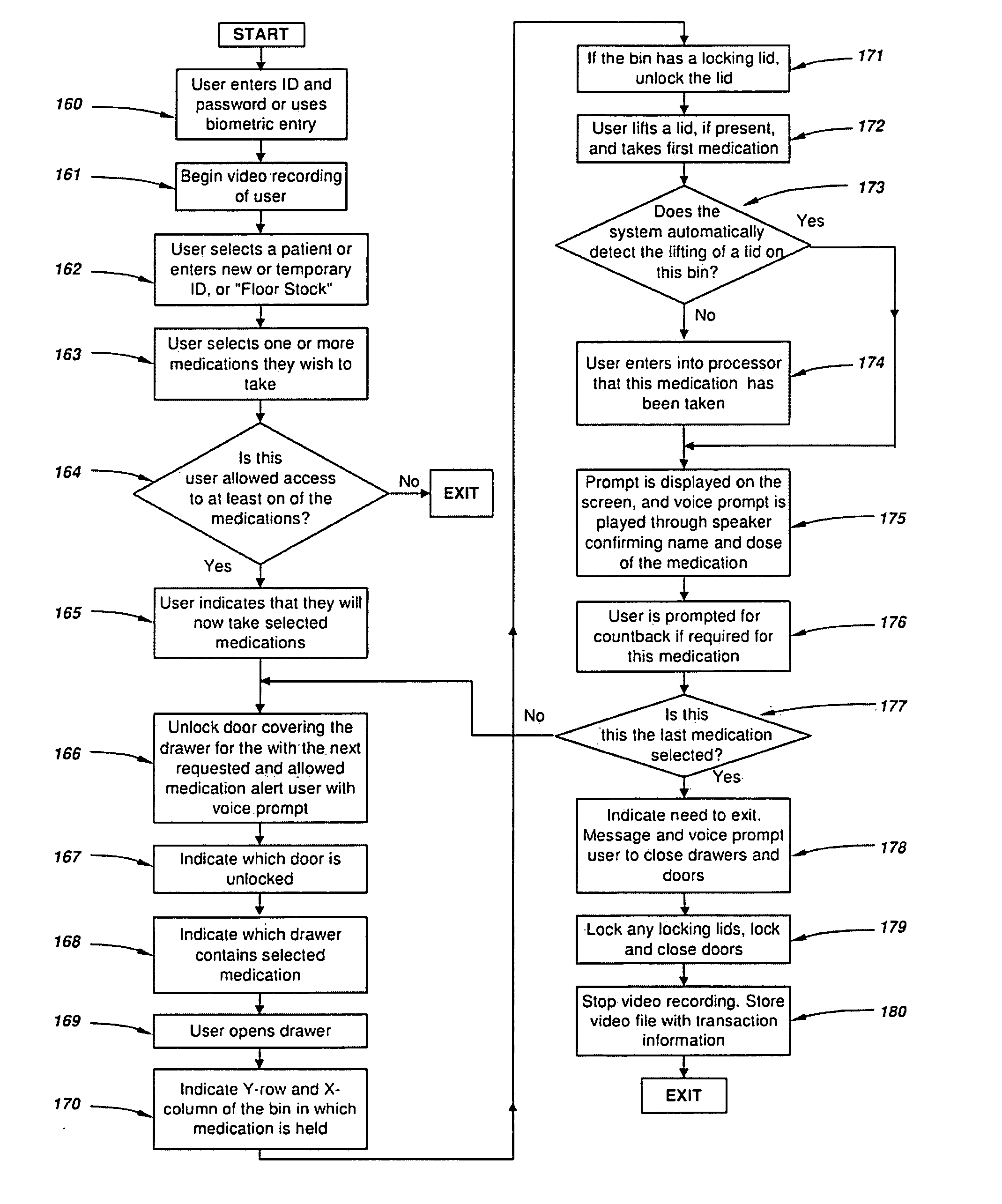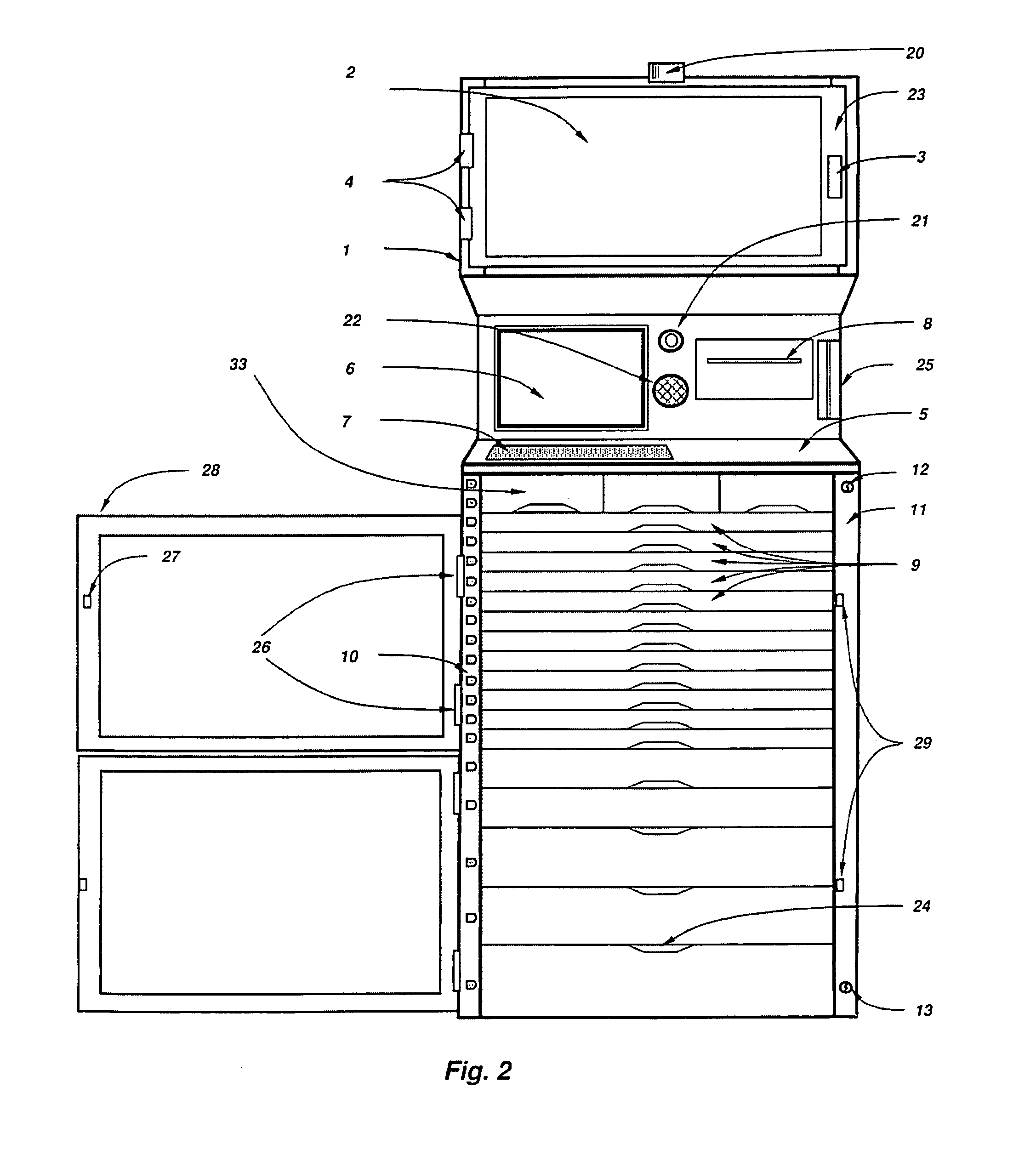Pharmaceutical dispensing system with coordinate guidance
a technology of a drug dispensing system and a coordinate guidance, which is applied in the direction of individual entry/exit registers, identification means, instruments, etc., can solve the problems of large amount of unused medication being returned, time-consuming, and the majority of patients being more critical
- Summary
- Abstract
- Description
- Claims
- Application Information
AI Technical Summary
Benefits of technology
Problems solved by technology
Method used
Image
Examples
Embodiment Construction
[0059]An exemplary dispensing unit is shown in FIG. 1. Dispensing cabinets similar but not identical to this drawing are common in acute care hospitals. However, the purpose of the inventions presented here is to provide methods that allow these cabinets to provide better functionality at lower cost, and to provide improved serviceability, in particular to provide faster mean-time-to-repair (MTTR), since these systems need to be available twenty-four hours a day, seven days a week, year in, year out.
[0060]In FIG. 1, an enclosure 1 is shown that contains a number of functional items. A processor with screen 6, which is preferably a touch screen, and a keyboard with mouse pad 7 is placed at a convenient height for a user. The console area also contains a printer enclosed within the cabinet with a slot 8 for the paper to exit, and optionally an automatic identification device, 25, which could be a magnetic card reader, a bar code reader or one of many biometric devices such is a finger...
PUM
 Login to View More
Login to View More Abstract
Description
Claims
Application Information
 Login to View More
Login to View More - R&D
- Intellectual Property
- Life Sciences
- Materials
- Tech Scout
- Unparalleled Data Quality
- Higher Quality Content
- 60% Fewer Hallucinations
Browse by: Latest US Patents, China's latest patents, Technical Efficacy Thesaurus, Application Domain, Technology Topic, Popular Technical Reports.
© 2025 PatSnap. All rights reserved.Legal|Privacy policy|Modern Slavery Act Transparency Statement|Sitemap|About US| Contact US: help@patsnap.com



